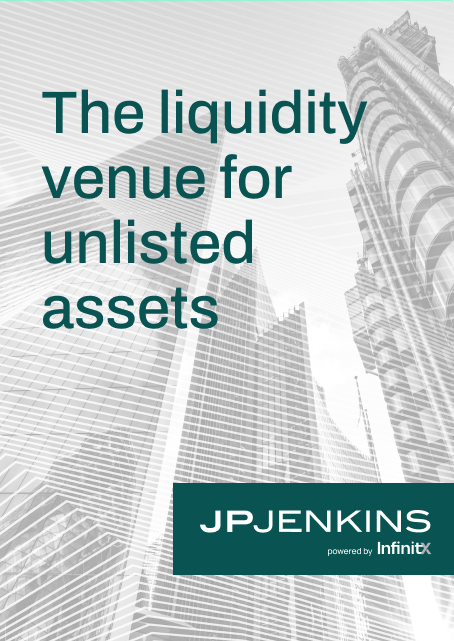
JOIN THE NEXT GENERATION OF PRIVATE TRADING TECHNOLOGY
WE POWER PRIVATE MARKETS
• Join a comprehensive financial trading ecosystem
• Connecting the buy and sell side with new technology
• Trade equity on your terms and control who participates
JOIN THE NEXT GENERATION OF PRIVATE TRADING TECHNOLOGY
WE POWER PRIVATE PLATFORMS
• Join a comprehensive financial trading ecosystem
• Connecting the buy and sell side with new technology
• Trade equity on your terms and control who participates

Customisable services
Platform as a service customised deployment for financial institutions
- API or manual trading
- Secure book build platform access
- Secure and customisable features

See a private venue in action
Visit our venue J P Jenkins, supporting UK private companies
- Transparent pricing
- Liquidity and exit
- Secondary market
- Service layers from ESG to advisory

Built For Scale
Connecting private venue participants around the globe
- Join a partner network
- Build your own private market
- Services and support
- Global in reach

Customisable servicing
Platform as a service customised deployment for financial institutions
- API or manual trading
- Secure book build platform access
- Secure and customisable features

See a public market in action
Visit our venue J P Jenkins, supporting UK private companies
- Transparent pricing
- Liquidity and exit
- Secondary market
- Service layers from ESG to advisory

BUILT FOR SCALE
Connecting private market participants around the globe
- Join a partner network
- Build your own private market
- Services and support
- Global in reach


+44 (0) 141 222 5775
Registered Office
InfinitX Limited
101 Wigmore Street
5th Floor
London
England
W1U 1QU
InfinitX Limited
126 West Regent Street
Glasgow
Scotland
G2 2RQ
InfinitX Limited
85 Great Portland Street
London
England
W1W 7LT
InfinitX Limited (InfinitX) provides technology solutions to companies. This webpage also contains a
link to its trading platform for unlisted shares which is operated under the trading name of JP Jenkins
by InfinitX as an appointed representative (FRN 950991) of Prosper Capital LLP which is authorised
and regulated by the Financial Conduct Authority (FRN 453007).
©2023. InfinitX Ltd. All Rights Reserved.

